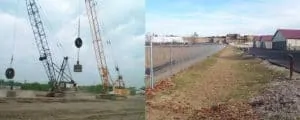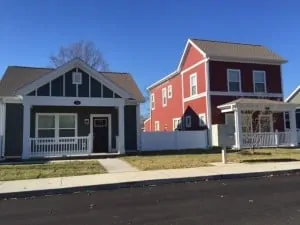


Historic fill is common on properties that were once rural and have become prime redevelopment sites as communities expanded. The fill may include contaminated materials like foundry sand, ash, demo and construction debris, and even municipal waste. In the past, these materials were used to fill wetlands or change the grade of the property before initial development. Today regulations have evolved, and state agencies require property owners to manage these materials appropriately during redevelopment. Also, particular types of historic fill are often not robust enough to structurally support your new building.

There are many different kinds of fill materials – each with different physical properties and different potential contaminants. Knowing what is on your property before you start designing the site layout, and certainly, before you start digging, will help you plan your project to save time and money, and to receive state agency approval.
Before You Buy
The more you know about the property and the earlier you know it, the better prepared you will be to make decisions about how best to protect yourself from potential environmental liabilities and prepare for the environmental and geotechnical issues that historic fill can cause. Since every property is unique, the first thing you need to do is gain a thorough understanding of the property’s history and past use. Invest in a comprehensive Phase 1 Environmental Site Assessment (ESA). Consider it a starting point for clues about the possible types and amounts of historic fill which may be present on the property.
If the results of the Phase 1 ESA warrant it, conduct a Phase 2 ESA and geotechnical study to collect soil, fill, groundwater, and soil vapor samples. The Phase 2 ESA and geotechnical studies will help you understand if fill and contaminants are present and the best options for addressing them during the development planning stage.
Historic fill on a property is no longer the impediment to development that it once was. Take these steps to get ahead of potentially contaminated historic fill, and keep your project on time and budget.
By testing early, performing a proper geotechnical evaluation, and incorporating design adaptations where needed, you can successfully develop projects with historic fill within your schedule and without breaking your budget.
SCS professionals are available to answer questions or concerns you may have pertaining to commercial, residential, or private development on brownfields – we provide remediation, brownfields, and Environmental Due Diligence services nationwide. Contact or one of our experts.

Ray Tierney, PG, is a Vice President of SCS Engineers and one of our National Experts on Sustainability. He has 30 years of experience in environmental and sustainability engineering and has helped a wide range of organizations control and reduce their legacy environmental impacts and liabilities, lower their costs, obtain grants and permits to expand, and implement cost-saving practices. Ray serves the Midwest region and projects throughout the U.S.
JohnTabella, PG, LEED AP®, is SCS Engineers National Expert for Environmental Due Diligence and for Federal Services. In this capacity, he oversees all aspects of environmental services opportunities and projects primarily throughout the eastern seaboard and supports on opportunities and projects throughout the U.S.
Floyd Cotter specializes in solid waste management projects. His project work involves all areas of solid waste management including planning, permitting, transportation, landfill design, construction, and monitoring. Floyd is also experienced in general civil engineering, construction oversight, environmental site assessments, closure and post-closure plans, and permit and contract document preparation. Floyd is located in the Central region.
Randy Bauer has nearly 3 decades of experience conducting environmental site assessments, subsurface investigations, groundwater monitoring programs, soil and groundwater remediation, and geotechnical investigations at industrial hazardous waste and solid waste facilities. Randy is available to answer questions on the western seaboard.